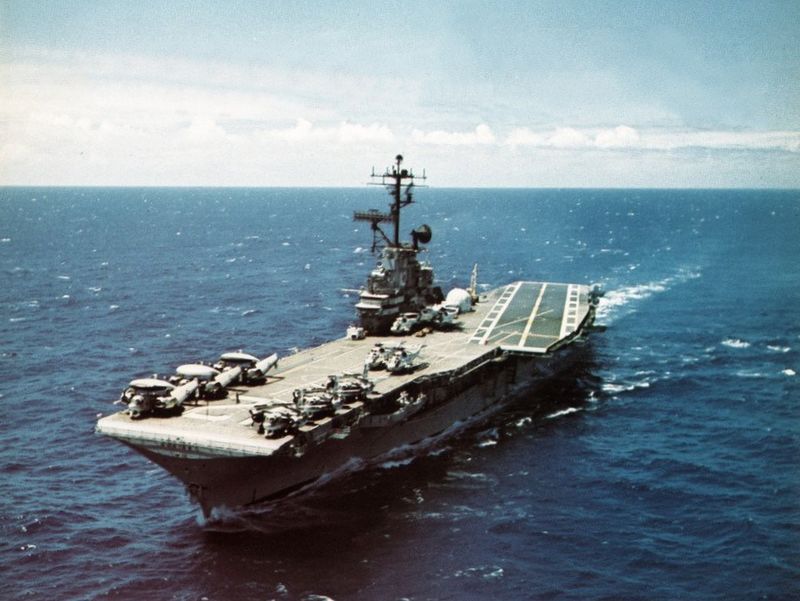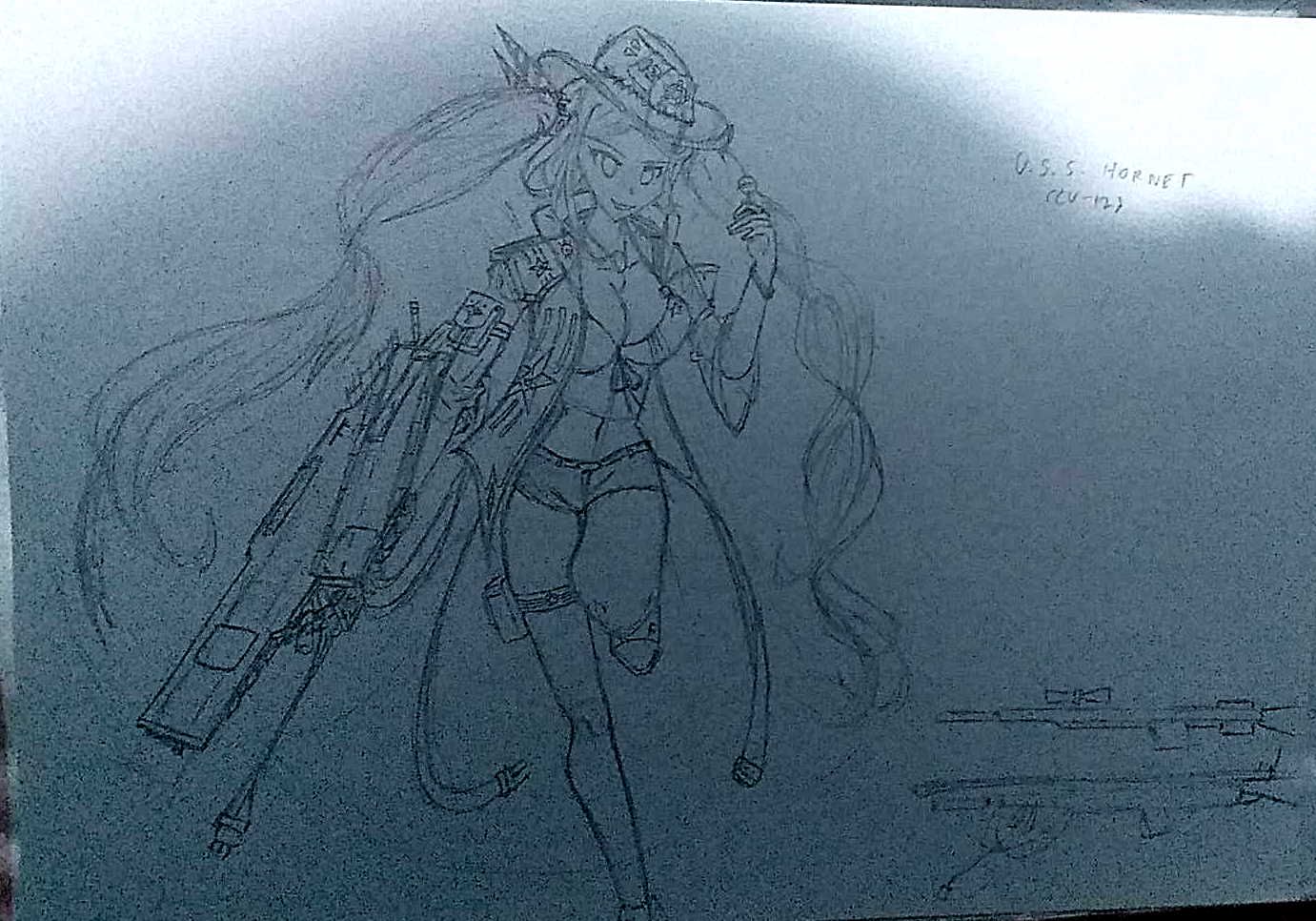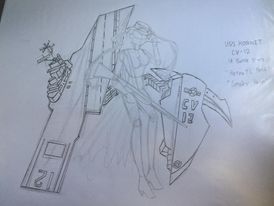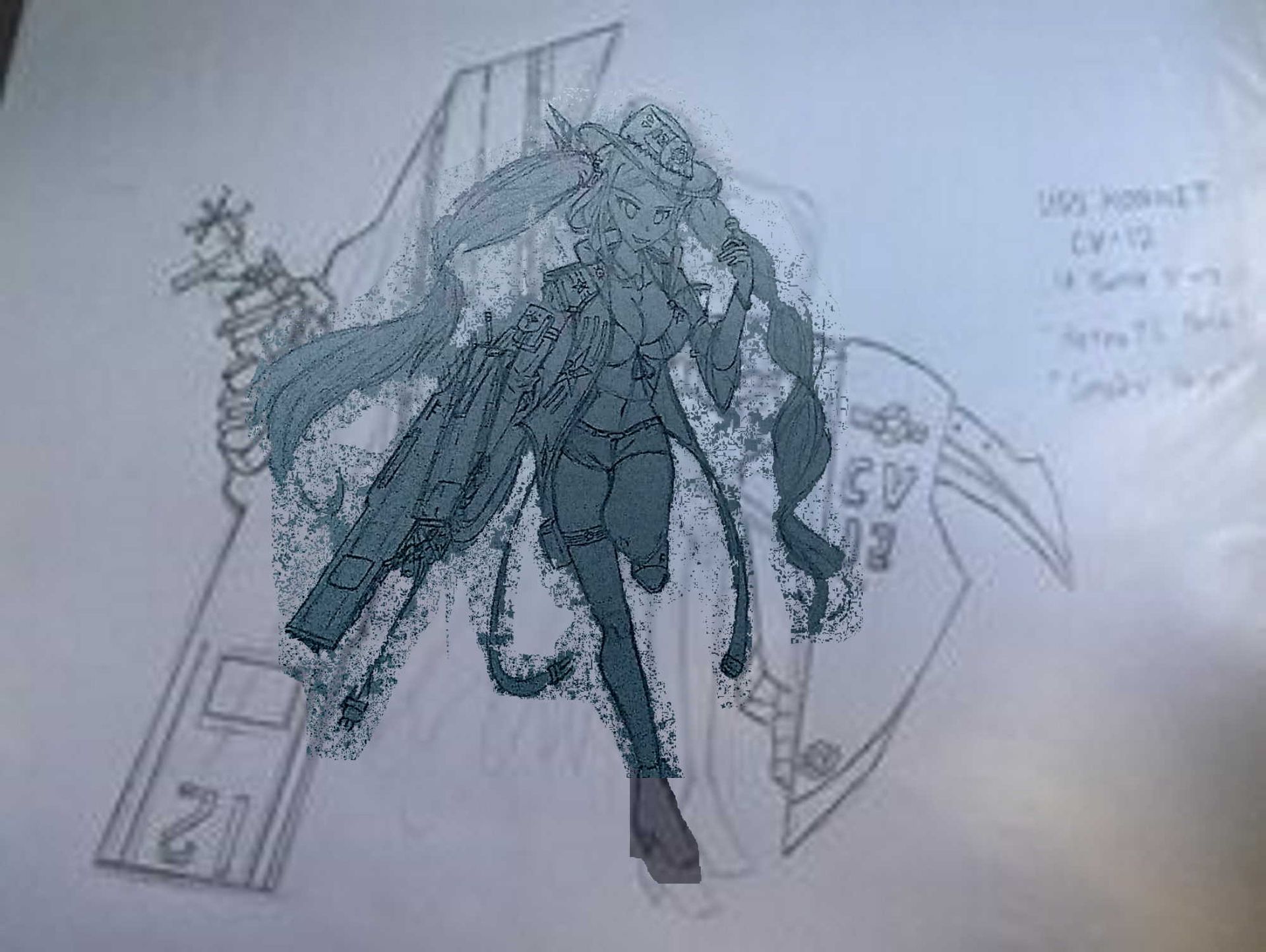Bio #3: U.S.S. Hornet (CV-12)
Ship Bio #1: Class and Service
U.S.S. Hornet (CV-12) is the 4th sister ship of the Essex-class aircraft carriers. The Essex-class are the new class of aircraft carriers, they're constructed during the naval incidents of the two Yorktown-class aircraft carriers and the near-loss of USS Missouri in the Battle on the Santa Cruz Islands.
U.S.S. Hornet (CV-10) originally was named U.S.S. Kearsarge, however it was renamed after the 3rd sister ship of the Yorktown-class, U.S.S. Hornet (CV-8)
Though originally, new ships will earn the names of former ships when it was sunk or scrapped, however, due to the battleship USS Missouri's influence, they decide to retain the plan to rename the carrier to its predecessor.
After USS Missouri's near death and sinking due to his dangerous rescue of CV-8 in Santa Cruz, she was built in the honor for the rescued aircraft carrier. She was built alongside her mother-ship for extensive overhauls.
In 1944, from Australia to the Philippines, both CV-8 and CV-12 fought alongside against Imperial Japanese Naval forces throughout the Liberation of the Philippines.
Throughout the 2nd World War in the Pacific Theater, U.S.S. Hornet (CV-12) earned 11 battle stars and the Presidential Unit Citation.
Throughout her career after the war, she went through extensive modifications such as more-advanced technologies, an angled flight deck, and new aircraft. She completed her conversion that fall, and on 14 October was placed back in full commission.
Like U.S.S. Intrepid (CV-11), she didn't participate in the Korean War, but she did participated in the Vietnam War. In the following years, Hornet was regularly deployed to the 7th Fleet for operations ranging from the coast of South Vietnam, to the shores of Japan, the Philippines and Okinawa.
She was also selected to be the recovery ship for recovering the astronauts and spacecraft that returned from their mission in space. On 25 August 1966, she was on recovery station for the flight of AS-202, the second uncrewed flight of production Apollo Command and Service Modules. The moonship rocketed three-quarters of the way around the globe in 93 minutes before splashdown near Wake Island. Scorched from the heat of its re-entry into the Earth's atmosphere, the Apollo space capsule, designed to carry American astronauts to the Moon, was brought aboard Hornet after its test
One of her most popular space recovery operations, was the recovery of the three astronauts (Neil Armstrong, Michael Collins, and Buzz Aldrin) and their command module Columbia from the first Moon landing mission, Apollo 11, after splashdown about 900 miles southwest of Hawaii in the Pacific Ocean on 24 July 1969.
She will then recover another Apollo mission on November, which was Apollo 12. Returning astronauts Charles Conrad, Jr., Alan L. Bean, and Richard F. Gordon, Jr., were picked up from their splashdown point near American Samoa.
U.S.S. Hornet (CV-12) and U.S.S. Intrepid (CV-11) have a fair share of similarities, from their service in the 2nd World War, to their modernization, to their service in the Vietnam War, and their role as a recovery ship for NASA operations especially space missions.
Though she had a long career for an aircraft carrier, she was decommisioned on June 26, 1970 and was stricken from the Navy List or Naval Register Vessel on July 25, 1989.
When she was mothballed-by luck, on December 4, 1991, the aircraft carrier was officially declared as a National Historic Landmark. 7 years later, in 1998, the carrier was donated to the Aircraft Carrier Hornet Foundation on 26 May 1998.
Although her mother-ship, U.S.S. Hornet (CV-8) was scrapped on July 4, 1948, CV-12 will carry both her mother's legacy and hers for the future generation. On 17 October 1998, she was opened to the public as USS Hornet Museum in Alameda, California. She was designated a California State Historic Landmark in 1999.
She will be soon recommissioned when the Battle of RIMPAC 2012 happened where she alongside her sisters and comrades fought against an Alien Armada Fleet from a distant planet. She was taken extensive repairs after the battle.
In 2023, to honor both her valiant service in the Battle of RIMPAC 2012 and the popularity of a certain Chinese mobile gacha game, a fan convention was held on the carrier. On March 18, 2023, U.S.S. Hornet (CV-12) hosted CarrierCona fan convention for anime, video game, comic and cosplay fans. In 2023, CarrierCon collaborated officially with Azur Lane.
Azur Lane is a popular Chinese mobile game with an English release that features anthropomorphic "shipgirls" including Hornet herself as Hornet II to distinguish her from the original Hornet. Later that year, Hornet was chosen to host Azur Lane's live event celebrating the 5th anniversary of its English/worldwide release.
Unfortunately, she sunk on Bikini Atoll on July 7, 2054 along with the rest of the warships that are museum ships. Operation CrossXs was the end for the World War 2 Pacific Naval Fleet that fought against a more advanced alien fleet back in 2012.
Ship Bio #2: SHIP

Ship Bio #3: Armaments and Others
12 × 5 in (127 mm) DP guns
32 × 40 mm (1.6 in) AA guns
46 × 20 mm (0.8 in) AA guns
Aircraft carried:
36 × Grumman F4F Wildcat
36 × Douglas SBD Dauntless
18 × Grumman TBF Avenger
Ship Bio #4: HUMAN EMBODIMENT

Nicknames:
1. Hornet's Nest
2. Fighting "H"
3. Hotel Hornet
Ship Bio #5: SHIP RIGGINGS

Ship Bio #6: AZUR LANE DESIGN - Drawn by me in 2020

Ship Bio #7: AZUR LANE DESIGN - Official

Bạn đang đọc truyện trên: AzTruyen.Top